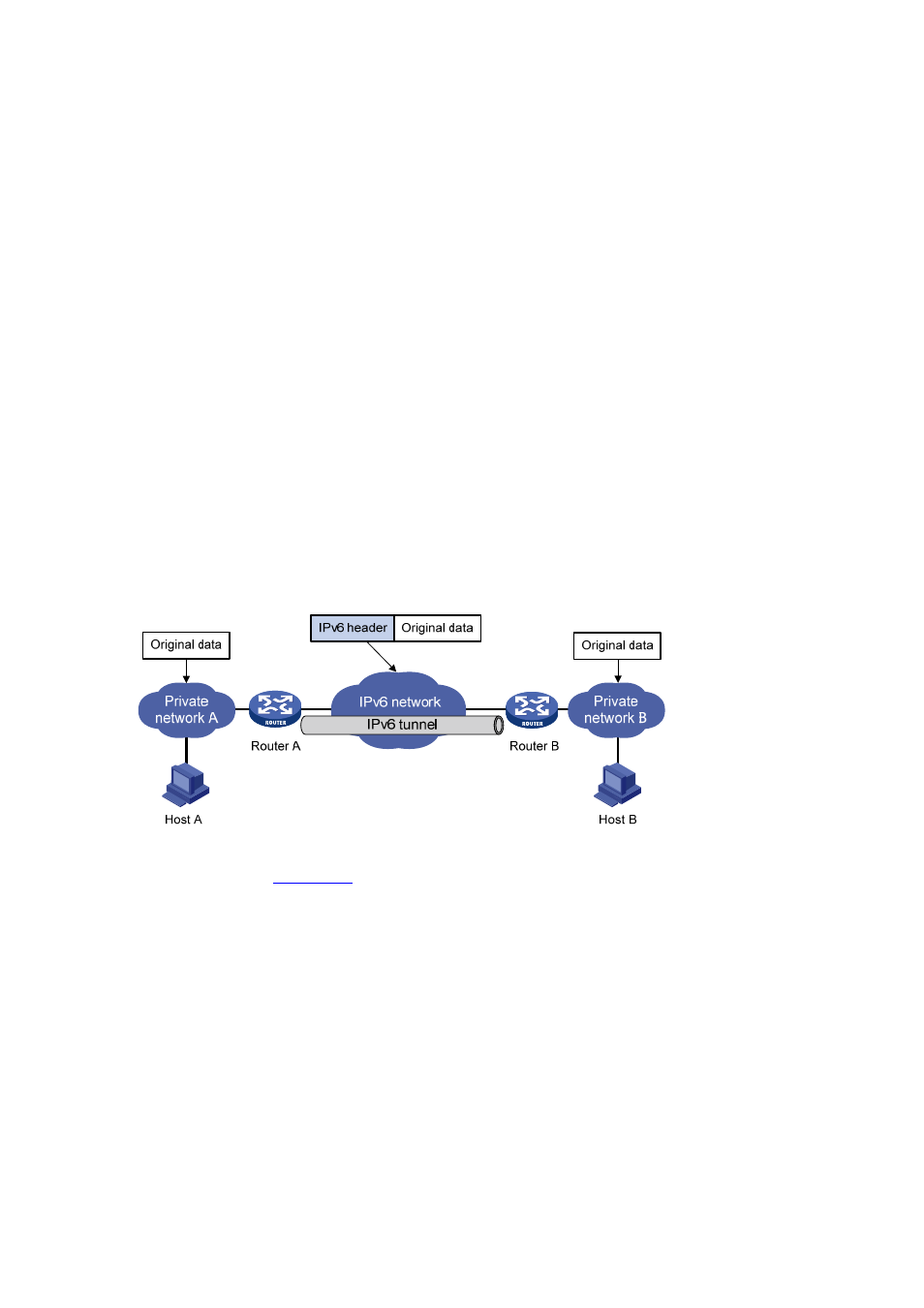Ipv4/ipv6 over ipv6 tunnel, Encapsulation and decapsulation – H3C Technologies H3C S7500E Series Switches User Manual
Page 163

15-6
2) The IP protocol stack determines how to route the packet according to the destination address in
the IP header. If the packet needs to be routed to the IPv4 host connected to Router B, the packet
is sent to Router A’s tunnel interface that is connected to Router B.
3) After the tunnel interface receives the packet, the packet is encapsulated and submitted to the IP
protocol stack for processing. The IP protocol stack determines the outgoing interface of the
tunnel according to the IP header.
z
Decapsulation
Contrary to the encapsulation process, the decapsulation process is as follows:
4) The IP packet received from the IPv4 network interface is sent to the IP protocol stack, which then
checks the protocol number in the IP header.
5) If the protocol number is IPv4, the IP packet is sent to the tunnel module for decapsulation.
6) The decapsulated IP packet is sent back to the IP protocol stack for processing.
IPv4/IPv6 over IPv6 Tunnel
Introduction to IPv4/IPv6 over IPv6 tunneling protocol
The IPv4/IPv6 over IPv6 tunneling protocol (RFC 2473) is developed for IPv4 or IPv6 data packet
encapsulation so that encapsulated packets can be transmitted over an IPv6 network. The
encapsulated packets are IPv6 tunnel packets.
Figure 15-4 Principle of IPv4/IPv6 over IPv6 tunnel
The original data in
refers to an IPv4 or IPv6 packet.
Encapsulation and decapsulation
The encapsulation process is as follows:
1) After receiving the original packet, the interface of Router A connecting private network A submits
it to the corresponding data module for processing. The data module then determines how to
route the packet.
2) If the packet needs to be routed to Host B connected to Router B, the packet is sent to Router A’s
tunnel interface that is connected to Router B.
3) After receiving the packet, the tunnel interface adds an IPv6 header to it and submits it to the IPv6
module for processing.
4) The IPv6 module re-determines a route according to the destination address in the IPv6 header.
Contrary to the encapsulation process, the decapsulation process is as follows:
The packet received from the IPv6 network interface is sent to the IPv6 module for processing.
